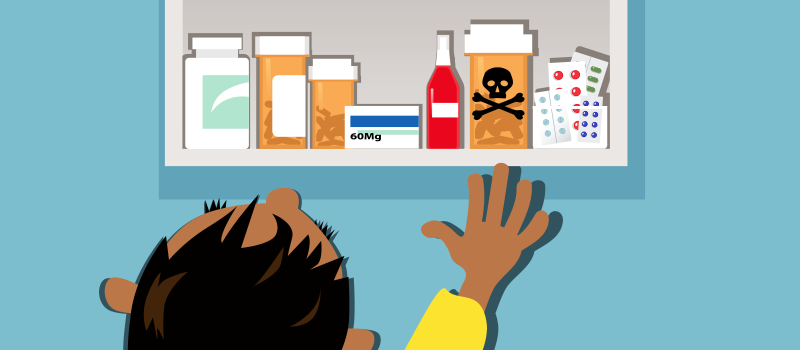What’s the Buzz
The Bee Healthy Blog
Telehealth vs. Telemedicine: Which medications can be prescribed?

Very early in the Covid-19 pandemic, it became apparent that telehealth would play a key role in the safe delivery of healthcare. In April 2020, the utilization of telemedicine services for outpatient care and office visits skyrocketed to 78 times more than in February 2020. It has since stabilized at around 38 times higher than pre-pandemic levels. The change, borne out of necessity, was fueled by two key factors—the increased willingness of patients and providers to use telehealth and regulatory changes that improved access to telemedicine and made reimbursement easier.
Please continue reading to learn about the differences between telemedicine and telehealth and what can and cannot be prescribed using these health care delivery systems.
Is there a difference between telemedicine and telehealth?
Telemedicine is an older term that refers to clinical healthcare services offered virtually by physicians. It provides patients with remote access to healthcare, including consultations, diagnosis, and treatment.
Telehealth is a newer term with a broader scope. It encompasses virtual clinical health care services as well as telecommunications technologies. These technologies support long-distance medical care, patient education, and public health administration. Telehealth, therefore, includes non-clinical endeavors such as remote administrative meetings, provider training, continuing education, etc.
Specifically, telemedicine is services provided directly to patients. It is a sub-category of telehealth that includes clinical services and processes that improve healthcare delivery using electronic and digital technologies.
An example of telemedicine is:
- A patient has a virtual video conference with their primary care office.
- Images of a rash are taken and uploaded into the system.
- A remote dermatologist views the images and shares their observations.
- The primary care doctor reviews the consult notes and determines if an in-person appointment is required.
An example of telehealth is:
- A senior pharmacist supervises and reviews prescriptions remotely from multiple locations.
- Patients can pick up a medication prescription at their nearest pharmacy staffed by technicians, and the pharmacist can deliver counseling via a screen.
What are the different types of telemedicine?
Synchronous telemedicine: This is the form of telemedicine most people are familiar with. It involves using video-conferencing technology on a computer or smartphone for an online visit with a physician. The interactions take place in real-time. For example, physicians can diagnose a condition, prescribe medications, offer advice on home care, or recommend additional evaluation or treatment.
Remote monitoring: This is a type of telemedicine that involves self-testing or self-monitoring. A patient uses a device at home, such as a blood pressure monitor, and shares results with a physician. Remote monitoring can be used in various situations, such as blood sugar levels in diabetics and heart monitoring in patients with cardiovascular disease.
Store and forward: This is a type of asynchronous telemedicine where doctors and patients communicate when they have time (similar to emails). For example, a patient sends their lab results to a physician via a patient portal, and the doctor responds later after they have reviewed the information.
What are the different types of telehealth services?
Patient portals: These are online tools that simplify healthcare by allowing patients to set up appointments, request medication refills, receive test results, and communicate with health care providers. Patient portals are generally more secure than emails and offer a single point of communication between doctors and patients.
Physician portals: These are systems that allow quick communication between doctors, such as a primary care physician getting connected to a specialist about a patient’s care. Physicians can share a patient’s medical history, images, test results, and notes and set up virtual consultations—this saves time compared to in-person meetings.
Electronic health records: These are software systems that maintain a complete record of a patient’s health history for easy access by multiple health care providers at remote locations.
Patient education: Telehealth can be used to educate patients and improve their health. New technologies have made it possible to reach large numbers of patients through blogs, web pages, and other resources.
Medical apps: Health apps have seen a huge boom and are included under telehealth—they help patients organize their health information and promote personal health outside a physician’s office by recording and tracking health metrics.
What can healthcare providers treat via telehealth care services?
Many common ailments can be quickly and easily treated via telemedicine services. This includes eye problems, cold and flu, allergies, acne, rashes, back pain, sprains, joint pain, stomach infections, acid reflux, medication questions, and minor COVID symptoms. However, not all medical conditions can be taken care of remotely—some may require an in-person appointment at a doctor’s office.
Can telehealth doctors prescribe medication?
Yes, prescribing medications virtually is permitted during a telemedicine appointment. Each state has laws about what drugs can be given to patients without an in-person consultation or previously established patient-physician relationship. With the COVID-19 pandemic, there have been changes in regulations, allowing previously disallowed medications to be prescribed virtually.
Can controlled substances be prescribed via telemedicine?
Controlled substances are drugs that have an increased potential for abuse by patients, for example, strong painkillers. Before the Covid-19 public health emergency, Federal law required at least one in-person visit with a health care provider for a medical evaluation before a controlled drug could be dispensed to a patient via subsequent telemedicine appointments. However, during the Covid-19 pandemic, authorized providers have been permitted to prescribe controlled substances via telehealth without requiring an in-person office evaluation.
Does insurance pay for a telehealth visit?
Telemedicine continues to evolve, and private insurers are adapting to the new rules on how services are provided and paid for. While laws and regulations vary from state to state, in general, during the Covid-19 pandemic, most insurance companies, including Medicare, will reimburse remote telemedicine healthcare visits at the same rate as in-person clinic visits. In addition, most states now require that telehealth services should be covered the same as in-person visits.
Pros and cons of telehealth and telemedicine
| PROS | CONS |
| Increased access to health care in underserved and rural areas. | Privacy and security are leading concerns, for example, the security of EHR data and audio/video recordings. There is a need for more HIPAA guidelines for healthcare providers regarding telemedicine. |
| Easy access to specialists in a remote location. | Lack of availability—while telehealth services are expanding rapidly, they are not available everywhere. |
| Time and cost savings with better efficiency in health care. One study in New York found access to telemedicine can reduce ER visits by 24%. (ER visits are up to 7 times more expensive than clinic visits.) | State licensures—there are issues regarding remote healthcare provided across state borders through telecommunications. |
| Improved continuity of care and management of chronic diseases. | Insurance reimbursement—telemedicine consultations may or may not be covered by health insurance companies. |
| Improved quality of health care—a diverse team of healthcare providers who are not in the same office can provide medical care to a patient. | Over-utilization—there are concerns that easy access to medical services may lead to over-utilization or over-prescription. |
| Better patient engagement—telehealth encourages patients to take ownership of their health and engage with doctors when needed; for example, patients track health parameters through smart devices and apps. | Care coordination—patients can potentially receive conflicting information by engaging with multiple physicians via telehealth. |
| Doctor shopping—there are concerns about the potential for abuse of controlled substances with patients obtaining prescriptions from multiple physicians. |
References:
- https://www.mckinsey.com/industries/healthcare-systems-and-services/our-insights/telehealth-a-quarter-trillion-dollar-post-covid-19-reality#
- https://www.mayoclinic.org/healthy-lifestyle/consumer-health/in-depth/telehealth/art-20044878
- https://www.healthit.gov/faq/what-telehealth-how-telehealth-different-telemedicine
- https://telehealth.hhs.gov/providers/policy-changes-during-the-covid-19-public-health-emergency/prescribing-controlled-substances-via-telehealth/
- https://www.medicinenet.com/script/main/art.asp?articlekey=89390












SOCIAL